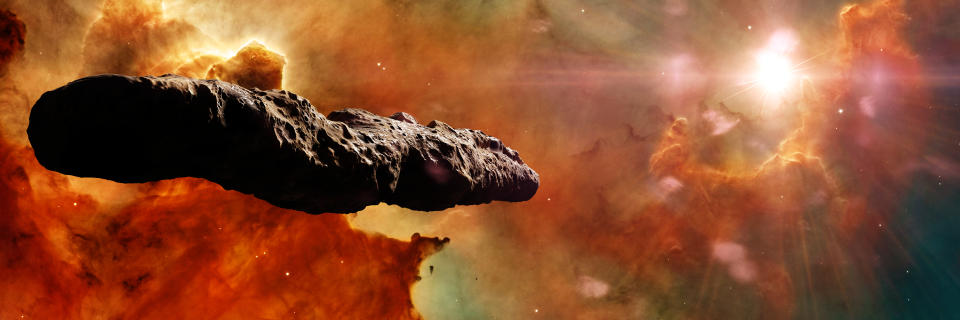Mysterious ‘cigar’ asteroid may have been fragment of planet torn up by star

A visitor to our solar system became the subject of headlines around the world in 2017 when the cigar-shaped rock now named `Oumuamua flew past our sun.
It was the first known interstellar object to visit our solar system, and some scientists initially suggested it might be an alien probe.
But now a new theory could explain where it really came from.
Read more: Comet or asteroid? Cigar asteroid shows we may need a new classification
Researchers from the Chinese Academy of Sciences and the University of California now believe the object may have been torn from a rocky object that travelled too close to a star.
The star’s gravity then hurled the elongated object into space, the researchers believe.
The researchers ran high-resolution computer simulations to model the structural dynamics of an object flying close by a star.
Professor Douglas Lin of UC Santa Cruz said: “We showed that ‘Oumuamua-like interstellar objects can be produced through extensive tidal fragmentation during close encounters of their parent bodies with their host stars, and then ejected into interstellar space.”
Read more: Asteroid that wiped out dinosaurs ‘exploded with force of 10bn atomic bombs’
Co-author Yun Zhang at the National Astronomical Observatories of the Chinese Academy of Sciences said, “It is really a mysterious object, but some signs, like its colours and the absence of radio emission, point to ‘Oumuamua being a natural object.”
The find suggests there must be an extremely large population of interstellar objects like ‘Oumuamua.
“The discovery of ‘Oumuamua implies that the population of rocky interstellar objects is much larger than we previously thought,” Zhang said. “On average, each planetary system should eject in total about a hundred trillion objects like ‘Oumuamua. We need to construct a very common scenario to produce this kind of object.”
When a smaller body passes very close to a much bigger one, tidal forces of the larger body can tear the smaller one apart, as happened to comet Shoemaker-Levy 9 when it came close to Jupiter.

 Yahoo News
Yahoo News 
